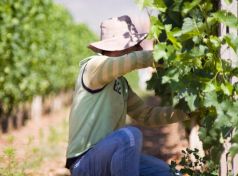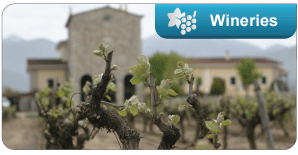Unique viticultural practices
Winegrowing was first organized in Greece thousands of years ago and has been continuously practiced around the country eversince. As time went by unique viticultural practices were developed according to the peculiarities of Greek vineyards. The following factors played a significant part in their establishment:
• Cultivation of countless native varieties, a practice not commonly encountered in other countries
• The existence of isolated but numerous small winegrowing zones on the islands and on the mainland
• Inaccessible and forbidding terrain which hampers the application of winegrowing practices possible on large expanses of flat terroirs
A number of these unique viticultural practices entail cultivation tasks carried out by hand which vintners still engage in concerning grapes for vinification. The most common of these tasks are:
• The picking of the grapes
• Pruning, especially into a basket (kouloura) on Santorini and goblet shapes
• Planting on tiered stone terraces
Apart from such ordinary tasks it is not uncommon in 21st-century Greece to encounter other unique winegrowing practices which seem to have traveled down the tunnel of time: a vine dresser pruning back his vines into basketshapes; another one digging into his vineyard’s arid soil with a grub hoe; a mountain vineyard being tilled by means of a horse-drawn plough; or a donkey carrying large, woven baskets overflowing with freshly-picked grapes... And all the while, superb yields of grapes come out of unique and “ancient” terroirs which for better or worse mechanical winegrowing will never access.



